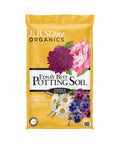Details
Plant Care
Caring for the Phalaenopsis Orchid is simple yet rewarding, making it a perfect choice for both beginners and seasoned plant lovers. Its elegant blooms bring a touch of exotic beauty to any space with minimal effort on your part. With the right attention, the Phalaenopsis Orchid will reward you with stunning, long-lasting flowers.
This is an elegant epiphytic orchid with smooth, broad leaves and a graceful arching flower stem that produces large, colorful blossoms. It thrives in bright, indirect light and enjoys a humid environment, making it ideal for indoor spaces. Watering is key—keep the soil moist but not soggy, and allow it to dry out slightly between waterings. Pruning is only necessary after flowering to remove spent stems.
Care
Planting & Growing
Watering:
Phalaenopsis Orchids prefer to be kept evenly moist but not overly wet. It's important to let the top layer of soil dry out slightly before watering again. When watering, it's best to do so in the morning and use room temperature or lukewarm water. Avoid getting water on the leaves or crown, as this can lead to rot. A good rule of thumb is to water about once a week, but this may vary depending on the humidity and temperature of your home.
Light:
Phalaenopsis Orchids prefer bright, indirect light. Avoid placing them in direct sunlight, as this can scorch their leaves. A good place to put them is near a north or east-facing window, where they can get plenty of bright, indirect light throughout the day. If the leaves start to turn yellow or brown, it may be a sign that they are getting too much light.
Fertilizing:
Phalaenopsis Orchids should be fertilized once a month during their growing season, which is typically from spring to fall. Use a balanced fertilizer specifically designed for orchids, and follow the instructions on the packaging carefully. Be careful not to over-fertilize, as this can damage the plant. If the leaves start to turn brown or the roots look dark, it may be a sign that you are fertilizing too much.
Repotting:
Phalaenopsis Orchids should be repotted every 1-2 years, or when the potting mix breaks down and becomes soggy. When repotting, use a specialized orchid potting mix, as regular potting soil can retain too much moisture and suffocate the roots. When removing the plant from its current pot, be careful not to damage the roots. Trim away any dead or damaged roots, and place the plant in its new pot. Water sparingly for the first few weeks after repotting, to give the plant time to adjust to its new surroundings.





































